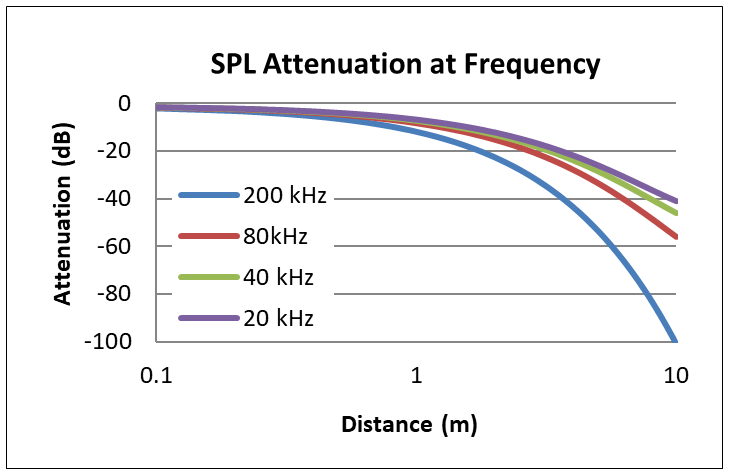SLAA907D September 2019 – December 2021 PGA450-Q1 , PGA460 , PGA460-Q1 , TDC1000 , TDC1000-Q1 , TDC1011 , TDC1011-Q1 , TUSS4440 , TUSS4470
2.5 Transducer Frequencies
Ultrasonic transducers operate at frequencies in the range of 30–500 kHz for air-coupled applications. As the ultrasonic frequency increases, the rate of attenuation increases. Thus, low-frequency sensors (30–80 kHz) are more effective for long range, while high-frequency sensors are more effective for short range. Higher frequency sensors (80–500 kHz) also reduce the ringing-decay, which allows for a shorter minimum detection range. For liquid level sensing, transducers in the 1-MHz range are often used. For more information on liquid level sensing using ultrasonic technology, read Ultrasonic Sensing Basics for Liquid Level Sensing application report (SNAA220).
 Figure 2-8 Correlation of Distance Measured and Frequency
Figure 2-8 Correlation of Distance Measured and FrequencyThe relationship between frequency, resolution, directivity, attenuation, and distance can be observed with the following relation:
↑ Frequency :: ↑ Resolution :: ↑ Narrower Directivity :: ↑ Attenuation :: ↓ Distance
Transducers can have narrow (15°) to wide field of views (180°). The higher the frequency, the narrower the field of view. A narrow field of view using a low-frequency transducer can also be achieved by adding a "horn" around the transducer to direct its echoes into a more narrow pattern.